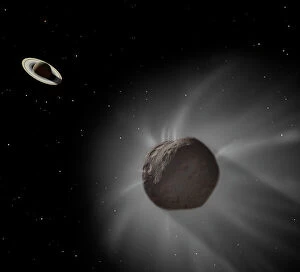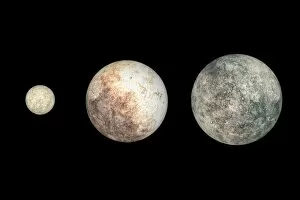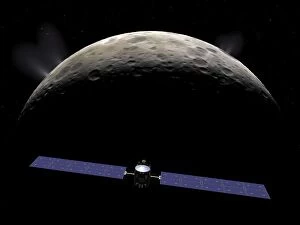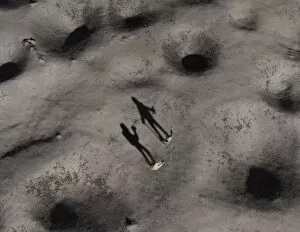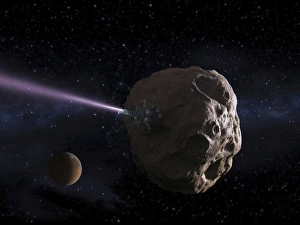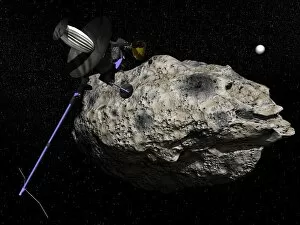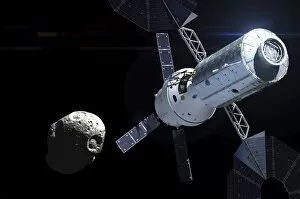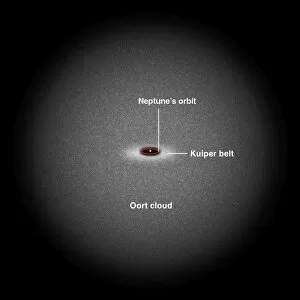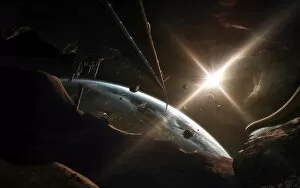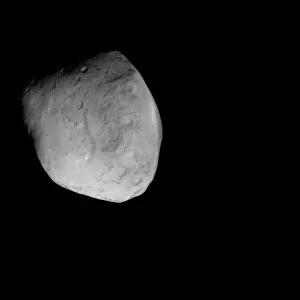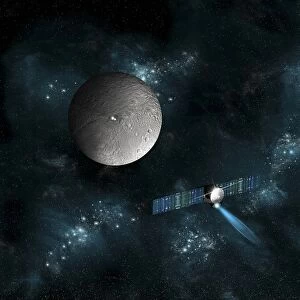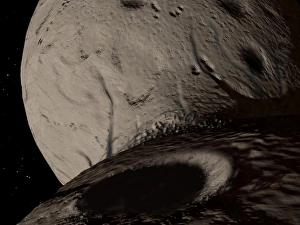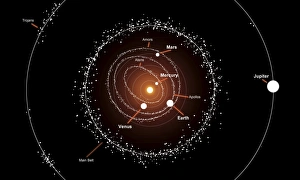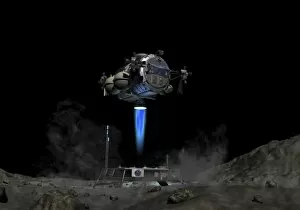Minor Planets Collection
"Exploring the Vast Universe: Unveiling the Mysteries of Minor Planets" Chiron passing near Saturn: Witness the celestial dance as Chiron, a minor planet
All Professionally Made to Order for Quick Shipping
"Exploring the Vast Universe: Unveiling the Mysteries of Minor Planets" Chiron passing near Saturn: Witness the celestial dance as Chiron, a minor planet, gracefully glides past majestic Saturn. A giant asteroid collides with planet Earth: Brace yourself for an epic collision between a colossal asteroid and our beloved home, Earth. The forces of nature at their most awe-inspiring. Artists concept of the Dawn spacecraft entering orbit around Ceres: Embark on a thrilling journey through space as the Dawn spacecraft gracefully enters orbit around Ceres, one of our solar system's intriguing minor planets. Pluton, its big moon Charon and the Polaris star: Marvel at this cosmic trio - Pluton, accompanied by its loyal companion Charon and framed against the backdrop of Polaris star - creating an ethereal spectacle in our night sky. The primordial Earth being formed by asteroid-like bodies: Delve into the origins of our precious blue planet as it takes shape amidst a chaotic symphony orchestrated by asteroid-like bodies during its primordial days. An artist's impression of a one-half-mile-diameter Kuiper Belt Object: Immerse yourself in this captivating artwork capturing the essence and grandeur of a massive half-mile-wide Kuiper Belt Object lurking within our vast cosmic neighborhood. Orbits of Earth-Crossing Asteroids: Observe with fascination as we map out intricate orbits followed by Earth-crossing asteroids – celestial wanderers that occasionally venture close to our own planetary abode. Artist's concept of humans exploring the surface of an asteroid: Join humanity on an audacious adventure beyond Earth's boundaries as intrepid explorers set foot on an alien landscape –the rugged surface of an enigmatic asteroid awaits. Asteroid mining outpost: Peer into humanity's future where resourceful pioneers establish thriving outposts on asteroids, harnessing their abundant wealth to fuel our ever-growing civilization.

